There are only three ingredients in these pupusas: masa, beans, and cheese. Masa is just ground up corn (what corn tortillas are made out of). In El Salvador they have a special soft cheese for pupusas, but I'm not even sure what it's called, so I used mozzarella.
My ingredients:
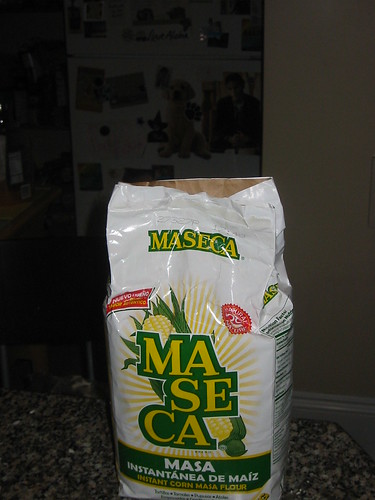
I already had this Maseca (dry masa), which I got at a store called Mi Tierra in Berkeley.
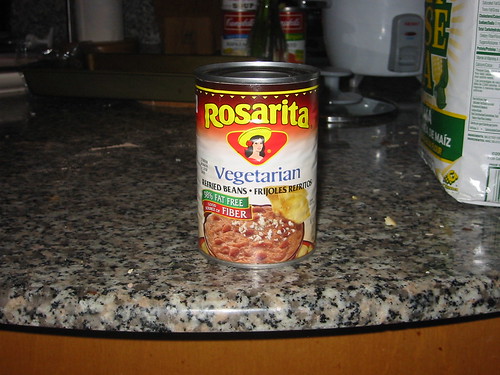
There is no exciting story behind this can of beans. I bought it at Haight Street Market (only because I happened to be on Haight Street). Note that it is vegetarian because most refried beans have lard (yuck).

The cheese has the same story as the beans.
And this is how I made the pupusas:
First step: prepare the masa. I mixed some Maseca with water to make the dough. I had to add a little more water than the packaging said to make it the right consistency.
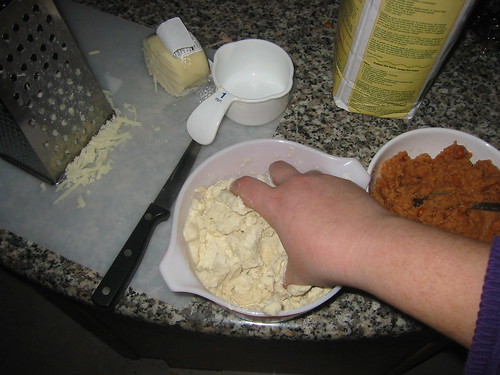

Second step: make the pupusa. First you roll a hunk of masa into a ball.

Then you flatten it into something like a bowl-shape, using a circular motion with your hands to keep it even and round (this is pretty hard, and I definitely don't do it the "right" way). This photo is not a great example of how it should be, but you get the idea:
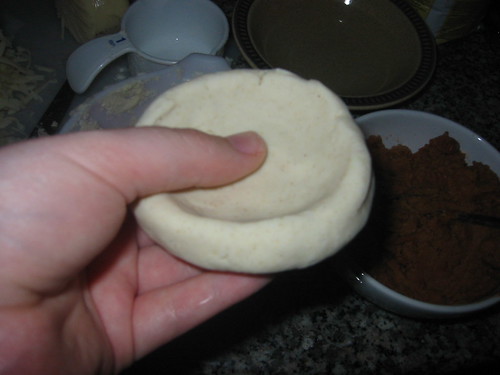
Put a little bit of beans and cheese in the middle and fold up the sides of the masa to make a closed ball again.
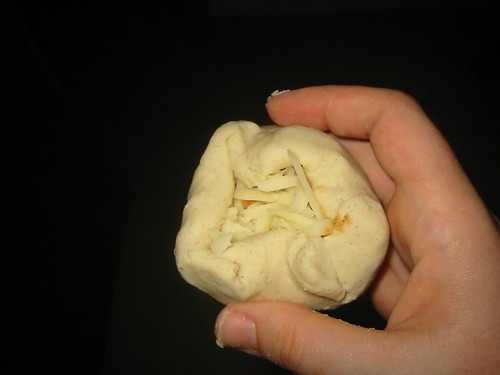
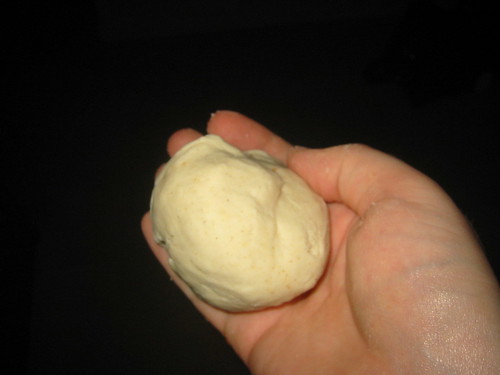
Then you want to flatten that ball, patting it back and forth between your hands.

You have to be careful not to put too much beans, or the masa will break open very easily (which happened to me a lot). When you're handling the masa, you have to wet your hands frequently to keep the dough from sticking to your skin (much).
Third step: cook it. I wasn't sure what temperature to have the pan or how long to cook it, so I improvised. It takes a long time for the masa to cook all the way through, which definitely tested my patience.
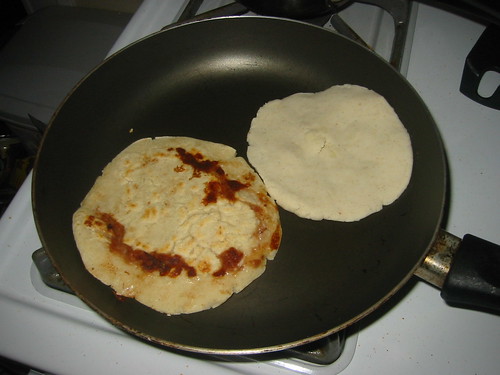
Cooked pupusas:

I cut up some cherry tomatoes and made a bit of simple guacamole (avocado, lemon juice, salt) to go with the pupusas, and it was all very delicious.


They weren't the same as authentic pupusas, but for gringa pupusas they were pretty yummy!
Andrea liked them:
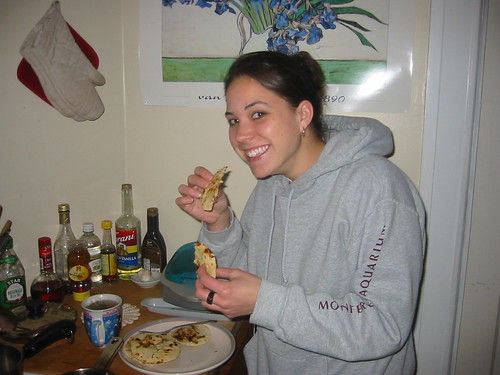
And so did Melanie:
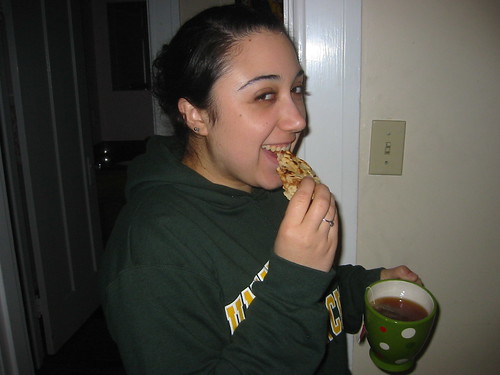
Overall, it was a delicious success.
5 comments:
a delicious success indeed!
thanks for such a detailed report on how to make pupusas. i'm going to use your blog post as a cook book and try to make them myself.
I'm making this next time I have access to cooking utensils.
nyom nyom nyom. BRB going to your house for dinner.
hey you think i could get this dry masa at a grocer around here? these look deliciooooooooous
I'm Salvadorean myself... And those look real good as much as authentic ones I eat :)
Everything is the same except the guacamole and the masa.... But they still look dealicious..
I'm hungry now, thanks a lot lol
Post a Comment